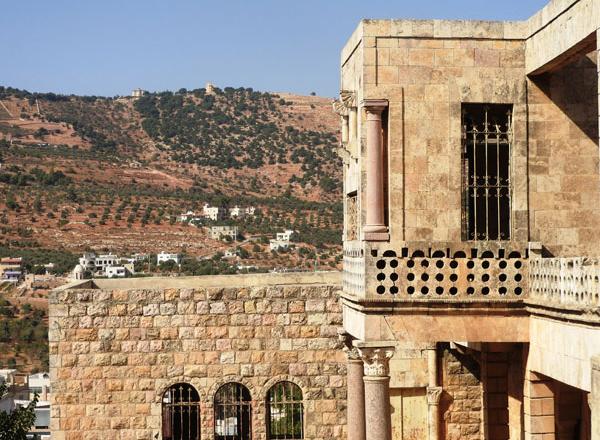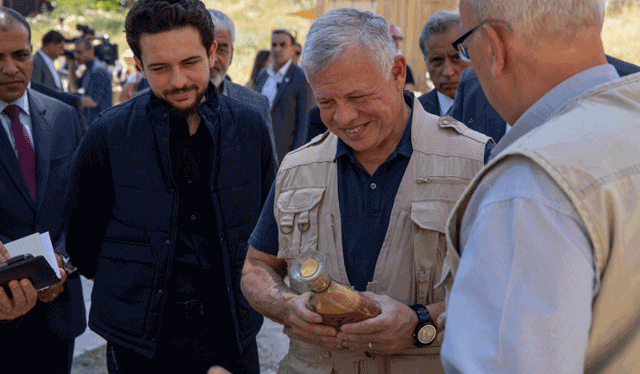You are here
Basking in former glory, Qaser Al Pasha retains aura of an era
By Ahmed Bani Mustafa - Sep 23,2017 - Last updated at Sep 23,2017

Built during the 1920s, Qaser Al Pasha is a unique monument in Jordan as the era was characterised with a scarcity of sophisticated architecture, according to experts (Photo by Ahmed Bani Mustafa)
AMMAN — Built during the 1920s, Qaser Al Pasha is a unique monument in Jordan as the era was characterised with a scarcity of sophisticated architecture, according to experts.
Located in Jerash’s Souf region, 55km north of Amman, the palace of Ali Pasha Al Kayed served as a local governing centre and a tribal gathering place, Yousef Zreiqat, a heritage expert said on Saturday.
The palace belonged to Ali Al Kayed, a dignitary from Souf, Zreiqat added.
Now the palace is owned by the Tourism Ministry after acquiring it from Ali’s family more than 20 years ago, Zreiqat said.
The building consists of three stories: the ground floor was used as stables and kitchens, the first floor served as the gathering place and the third was the residence of the pasha, said Adulelah Kayed, a tourism expert.
The significance of the building comes from the architectural style, the era during which it was built, and the strategic location, which is close to Ajloun, Irbid and Amman, according to Kayed.
During its heyday, the palace hosted kings, politicians and renowned personalities, Kayed told The Jordan Times.
King Abdullah I visited Souf many times, and whenever he was in the area he was received at the palace, Kayed said.
King Abdullah I’s brothers Prince Feisal, Prince Ali and Prince Zeid also visited Souf and were received at the palace.
King Abdullah I hosted former Iranian president Mohammad Reza Pahlavi in Souf, as well as the British high commissioner and the chief representative and Sultan Al Atrash, the Syrian revolutionary leader, Kayed said.
The stones of the palace were brought from the adjacent Roman town of Gerasa — modern-day Jerash — and some other ancient sites in the region, according to Zreiqat.
Zreiqat called for turning the building into a cultural centre that includes a museum, an archive and an exhibition for local produce.
He said that he has prepared a study to help the local community benefit from the monument, which would create eight permanent and 10 indirect job opportunities.
Jerash Tourism Director Mashael Khasawneh said that a restoration project is included in the 2018 budget.
Jerash’s Antiquities Department was authorised by the ministry to implement the project and establish a training centre to teach locals on restoring artifacts, according to Khasawneh.
Related Articles
JERASH — An estimated seven or more springs were revived after heavy rain fell on Jerash and its surrounding districts this past week.Accord
AMMAN — His Majesty King Abdullah on Wednesday toured Jerash Visitor Centre, accompanied by HRH Crown Prince Hussein.King Abdullah highlight
JERASH — The Jerash Greater Municipality is scheduled to initiate several development projects worth JD13 million to link Jerash's old and n



















